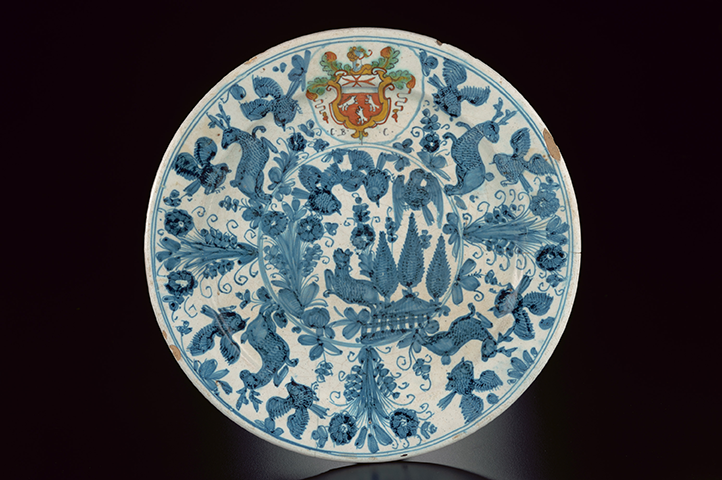Plate with coat of arms
| Object Title | Plate with coat of arms |
| Origin | Genoa, Italy |
| Date | ca. 1710s |
| Material | Tin-glazed earthenware |
| Dimensions | diameter 25.6 cm |
| Collection | Asian Civilisations Museum, Gift of Mr and Mrs Toshio Egawa |
| Accession No. | 2007-55829 |
The quest to duplicate Chinese porcelain was an obsession shared by many connoisseurs and entrepreneurs in Europe. Early successes in Florence commissioned by Grand Duke Francesco I de’ Medici (r. 1574–1587) led to the production of a type of soft-paste porcelain made from white clay and ground glass around 1575. Italian potters also attempted to imitate Chinese porcelain by applying painted decoration to traditional low-fired earthenwares with white tin glazes called maiolica. Italian maiolica production flourished from the fifteenth to seventeenth centuries and laid the foundations for other tin-glazed pottery traditions in Europe.
The designs on this maiolica plate are painted in a spontaneous style reminiscent of kraak ware. The design in each quarter of the outer band is repeated and separated by floral bouquets, except for an area that was intentionally left blank so that it could be personalised to suit individual buyers. That space was painted with a coat of arms in red, orange and green enamels—likely the arms of a member of the Knights of Malta.
